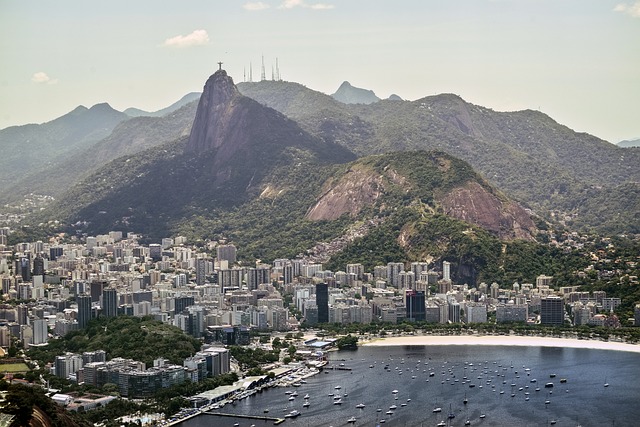
Rio de Janeiro, often referred to simply as “Rio,” is one of the most iconic cities in the world. Known for its stunning landscapes, vibrant culture, and world-famous landmarks, Rio is a destination that captures the hearts of all who visit. This detailed guide will take you through the best that Rio de Janeiro has to offer, from its beaches and mountains to its cultural sites and festive atmosphere.
The Iconic Landmarks
Christ the Redeemer (Cristo Redentor)
One of the New Seven Wonders of the World, Christ the Redeemer is a must-visit landmark in Rio. Standing 30 meters tall atop the 700-meter-high Corcovado Mountain, this statue offers panoramic views of the city, the bay, and the surrounding mountains. The best time to visit is early in the morning or late in the afternoon to avoid the crowds and enjoy the best light for photography.
Sugarloaf Mountain (Pão de Açúcar)
Sugarloaf Mountain is another iconic landmark, offering breathtaking views of Rio de Janeiro and the Atlantic Ocean. The journey to the summit is an adventure in itself, involving two cable car rides. The first takes you to Morro da Urca, and the second to the peak of Sugarloaf. Sunset is a particularly magical time to visit, as the city lights up and the sky changes colors.
The Beaches
Copacabana Beach
Copacabana is perhaps the most famous beach in the world, stretching 4 kilometers along the Atlantic coast. It’s a hub of activity, with sunbathers, volleyball players, and street vendors creating a lively atmosphere. The iconic black-and-white wave pattern of the promenade, designed by landscape architect Roberto Burle Marx, adds to its charm.
Ipanema Beach
Just west of Copacabana, Ipanema Beach is known for its upscale vibe and beautiful scenery. The beach is divided into different sections, each attracting a different crowd. Posto 9 is particularly popular with the younger, trendier crowd, while families tend to gather near Posto 10. The sunset from Arpoador Rock at the eastern end of Ipanema Beach is a must-see.
The Carnival
Rio de Janeiro is synonymous with Carnival, the world’s largest and most famous festival. Held annually before Lent, Carnival is a riot of color, music, and dance. The main events are the samba parades at the Sambadrome, where samba schools compete in elaborate costumes and floats. Street parties, known as “blocos,” take place throughout the city, offering a more informal but equally festive experience.
Cultural and Historical Sites
The Historic Center
Rio’s historic center is a treasure trove of colonial architecture, museums, and cultural sites. The Municipal Theatre, inspired by the Paris Opera House, is a stunning example of early 20th-century architecture. The National Library and the Imperial Palace are also worth a visit.
Santa Teresa
The bohemian neighborhood of Santa Teresa, perched on a hill, is known for its narrow streets, colonial mansions, and artistic vibe. It’s a great place to explore on foot, with numerous art studios, galleries, and cafes. The Selarón Steps, a colorful mosaic staircase created by artist Jorge Selarón, are a highlight.
Natural Wonders
Tijuca National Park
Tijuca National Park is the world’s largest urban rainforest, covering 32 square kilometers. It’s home to a variety of wildlife, waterfalls, and hiking trails. The hike to the peak of Tijuca offers stunning views of the city and the surrounding forest.
Botanical Garden (Jardim Botânico)
Founded in 1808, the Botanical Garden is a peaceful oasis in the city. It features more than 6,000 species of tropical and subtropical plants, including the famous imperial palm trees. The garden is also home to numerous bird species, making it a haven for birdwatchers.
The Culinary Scene
Rio de Janeiro’s culinary scene is a delightful blend of traditional Brazilian flavors and international influences. Must-try dishes include feijoada (a hearty black bean stew with pork), pão de queijo (cheese bread), and fresh seafood. The city is also famous for its churrascarias, where you can enjoy an endless parade of grilled meats.
Lapa
The Lapa neighborhood is the heart of Rio’s nightlife, known for its samba clubs, bars, and live music venues. The Arcos da Lapa, a historic aqueduct, is an iconic landmark in the area. Lapa comes alive at night, with street parties and music spilling out into the streets.
Practical Tips for Visiting Rio
Safety
While Rio is a beautiful city, it’s important to be aware of safety precautions. Stick to well-lit and busy areas, avoid displaying valuables, and be cautious in unfamiliar neighborhoods. It’s also a good idea to use reputable taxi services or rideshare apps.
Best Time to Visit
The best time to visit Rio is during the summer months (December to March), when the weather is warm and festive events like Carnival take place. However, this is also the peak tourist season, so be prepared for crowds and higher prices. The shoulder seasons (April to May and September to November) offer milder weather and fewer tourists.
Getting Around
Rio has a comprehensive public transportation system, including buses, metro, and trams. The metro is a convenient and safe way to get around the city, especially for longer distances. Taxis and rideshare services are also widely available.
Conclusion
Rio de Janeiro is a city of contrasts, where natural beauty meets vibrant culture and historical charm. From its iconic landmarks and stunning beaches to its lively festivals and rich culinary scene, Rio offers a unique and unforgettable experience for every traveler. Whether you’re exploring the historic streets of Santa Teresa, dancing the night away in Lapa, or simply relaxing on the shores of Copacabana, Rio de Janeiro promises a journey filled with wonder and excitement.

